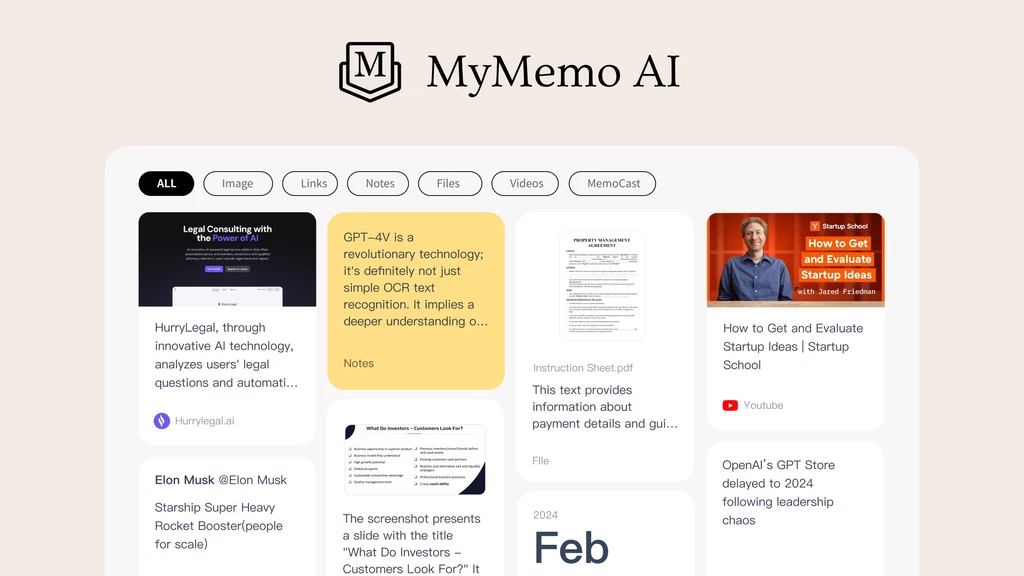Why Most AI Startups Fail
You know that awkward feeling when you realize—halfway through a pizza with friends—that the AI-powered dream startup you’ve been toying with all year might actually be…statistically doomed? I’ve been there, which is probably why the headlines like “99% of AI startups die by 2026” made me laugh-cry into my coffee. Look, the world is obsessed with AI dreams, but there’s a pile of smoldering (and expensive) failures no one wants to talk about. Today, let’s air out the laundry. Instead of slick promises, let’s get real, share some startling numbers, and maybe, just maybe, find out why your AI startup might be the exception—if you avoid these all-too-common mistakes.
Deathtrap: 5 Ways AI Startups Go Down in Flames (And Yes, Renting an API is One of Them)
Let’s get brutally honest: the AI startup landscape is a graveyard. According to the latest AI startup failure statistics, 99% of AI startups are projected to die by 2025–2026. MIT reports that 95% of AI pilot projects fail to deliver measurable ROI. That’s not just bad luck—it’s a pattern. If you want to avoid becoming another cautionary tale, you need to know the common pitfalls in AI startups that keep repeating like a bad remix. Here’s what’s killing these businesses, and why so many founders are stuck in a loop of déjà vu.
1. Rapper Syndrome: The API Wrapping Trap
It’s tempting to build your “AI business” by simply putting a new skin on someone else’s tech—usually an API from OpenAI, Google, or Anthropic. This is what I call Rapper Syndrome: you’re not building, you’re wrapping. You’re Copy.ai, Jasper, or Otter, but without their brand or distribution muscle. The problem? You have no unique edge. You’re renting someone else’s engine, and your “innovation” is just a thin UI layer or a workflow tweak.
- When OpenAI changes their pricing or features, your margins vanish overnight.
- Competitors can clone your product in a weekend.
- Investors see through the “business by wrapping” model and run for the hills.
Relying on someone else’s API means you’re always one platform update away from irrelevance. This is why so many AI startups flame out before they even get traction.
2. Solutions in Search of Problems
It’s easy to fall in love with the tech. You see what AI can do, and you build something cool—then scramble to find a real-world problem it solves. This “tech-first, problem-second” approach is a deathtrap. AI pilot project failure rates are sky-high because most projects start with a solution and then hunt for a use case. The result? Demos that impress, but products that nobody actually needs.
- 95% of AI pilots fail to achieve ROI (MIT report).
- $40 billion has been wasted on failed AI initiatives in just two years.
- 42% of companies are abandoning their AI projects entirely—double last year’s rate.
If you’re not solving a burning pain point, you’re just adding to the noise—and the failure stats.
3. Economics of Doom: When Unit Economics Don’t Add Up
Here’s a harsh truth: most unit economics for AI businesses are upside-down. Customer acquisition costs (CAC) for AI tools often run $25–$50 per user, but typical pricing is just $29/month. That means you’re burning cash faster than you can make it, hoping scale will save you. Spoiler: it usually doesn’t.
- High CAC and low retention rates = negative margins.
- Burn rate outpaces monetization, and investors lose patience fast.
- Even with $30–$40 billion in enterprise investment, returns have been minimal.
If your economics don’t work at a small scale, they won’t magically fix themselves at a large one.
4. Demo-to-Reality Letdown
AI products often look magical in demos. But when real business messiness enters the chat—edge cases, compliance, integrations, and actual workflows—most products flop. This is the demo-to-reality letdown that kills adoption and leads to high AI project abandonment rates.
- 42% of companies now abandon most AI projects, up from 17% last year.
- Enterprise buyers are burned out on “AI magic” that doesn’t deliver in production.
If your product can’t survive outside the demo environment, it won’t survive at all.
5. Misreading the Market: The Skepticism Factor
Don’t assume the world is as hyped about AI as you are. Market skepticism towards AI solutions is real: 67% of business leaders are still unconvinced of AI’s value. Many have been burned by overpromises and underdelivery. If you build for “everyone,” you’ll reach no one.
- Long sales cycles and slow adoption are the norm.
- Most customers are wary, confused, or just waiting for the hype to die down.
The market is littered with the remains of startups that assumed enthusiasm was universal. It isn’t.
How to Not Become a Statistic: Lessons from the (Very) Few AI Survivors
Start with the Problem—Not the Tech
If you want your AI startup to survive, you have to flip the script. Forget the hype about “AI-powered everything.” The rare winners don’t start with a shiny model—they start with a pain point that costs real money. This is the problem-first approach in AI development. Before you write a single line of code, ask: What’s the $10,000/month pain point I’m solving? If you can’t name a problem that’s draining at least $10,000 a month from your target customer, you’re not solving anything urgent enough.
Look at the survivors: Copy.ai, Grammarly, even Tesla’s self-driving stack. They didn’t chase vague “AI for productivity” promises. They attacked specific, expensive headaches—like writing faster, fixing embarrassing typos, or reducing car accidents. The result? Customers who care and will pay.
Vertical Specialization: Be the Best, Not the Broadest
The graveyard of AI startups is full of “one-size-fits-all” tools. The survivors go deep, not wide. Vertical specialization in AI startups means you become the absolute best at solving a problem in a single industry or workflow. Think “the Spotify of legal contract review” or “the Grammarly for medical notes.” This focus lets you tailor your product, messaging, and data collection—making it much harder for generic competitors to catch up.
Why does this work? Because specialized customers have specialized needs. When you speak their language and solve their exact pain, you win trust—and contracts.
Build a Proprietary Data Advantage
Here’s the dirty secret: Most AI “startups” are just wrappers around someone else’s API. If a college student can clone your product over a weekend, you don’t have a business—you have a temporary arbitrage. The true survivors invest in a proprietary data advantage in AI. Grammarly’s edge is its corrections database. Tesla’s moat is billions of miles of driving data. Your moat should be exclusive data, proprietary pipelines, or network effects that nobody else can access or replicate.
This defensibility is your insurance against the next price drop from OpenAI or a new API competitor. Without it, you’re just another face in the crowd.
Ruthless Cost Management and Realistic Unit Economics
AI isn’t cheap. Inference costs, infrastructure, and ongoing R&D can eat you alive if you’re not careful. The survivors crunch the numbers—ruthlessly. They know their unit economics from day one. They plan for real infrastructure and inference costs, not fantasy margins. They don’t assume a magical flood of customers will make the math work.
Cost management in AI startups is about discipline: track every dollar, forecast your burn, and price your product to survive. Effective pricing strategies for AI products aren’t about being the cheapest—they’re about capturing the value you create. If you’re solving a $10,000/month problem, charging $2,000/month is a bargain for your customer and a lifeline for your business.
Slow, Hands-On Adoption: Trust Is Earned, Not Downloaded
AI isn’t a “plug and play” solution for most businesses. The rare survivors know that AI startup strategies must include slow, hands-on adoption. This means pilots, white-glove onboarding, customer education, and a lot of trust-building. Proof-of-concept alone isn’t enough; the adoption gap is where most dreams die.
Be ready to walk customers through the journey, answer tough questions, and prove your value in real workflows. The more critical the problem you solve, the more hand-holding you’ll need to do.
Survivor Bias Isn’t Magic—It’s Measurable Results
It’s tempting to look at Copy.ai or Grammarly and think they just got lucky. But luck had little to do with it. They solved hairy, measurable problems for specific audiences, built defensible data moats, and managed their costs with discipline. Their success is repeatable—if you follow the same playbook.
- Problem-first mentality: Start with a costly, urgent pain point.
- Vertical focus: Specialize deeply in one industry or workflow.
- Proprietary data: Build unique, defensible assets.
- Ruthless economics: Know your numbers and price for survival.
- Hands-on adoption: Earn trust, one customer at a time.
If you want to beat the odds, this is your formula. Don’t become another statistic.
From Demo Magic to Real-World Grit: Creative Detours on the Road to AI Startup Success
Let’s be honest: AI demos are pure magic. In the controlled world of a product launch, everything works perfectly. The data is clean, the interface is slick, and the results look like tomorrow’s news. But the real world? That’s where the magic fades, and the grit begins. If you’re building an AI startup, you’ll quickly discover that the journey from dazzling demo to daily value is filled with creative detours, hard lessons, and a relentless focus on customer pain points in AI solutions.
Remember the pizza anecdote? If you can’t explain your AI’s value to a 12-year-old—say, “It’s like ordering pizza, but faster and cheaper”—you’re in trouble. That’s your check-engine light. If your pitch needs a PhD to understand, you’re not ready for the market. In fact, picture pitching your AI startup at a skeptical kindergarten. If even half the room looks confused, it’s time to rethink your pitch. Clear, simple articulation of value beats sophisticated jargon every time. AI adoption isn’t about impressing experts; it’s about making everyday users say, “Oh, I get it!”
But here’s the dirty secret: Most successful AI founders don’t spend their days coding in isolation. They swear by boring, repetitive customer interviews and actually love hearing complaints. Why? Because every grumble, every “this doesn’t work for me,” is a goldmine for building sustainable technology stacks. The best founders know that customer education is as much an expense as product development. They invest in patient, hands-on work—demos, pilots, proof of concept, and endless content marketing—to bridge the gap between demo excitement and daily usefulness.
And let’s talk about the economics. The harsh math of AI startup monetization challenges is simple: If your cost per customer is higher than what you can charge, you’re not building a business—you’re funding a bonfire. Many AI startups, especially those relying on expensive API calls and compute, fall into the “unit economics death spiral.” They think they can make up for negative margins with volume. But more customers just mean more losses. Growth, in this case, isn’t a victory lap—it’s a race to bankruptcy. The only way out? Ruthlessly optimize your costs, and never assume that scale alone will save you. The API and infrastructure bills are real, and they don’t care about your growth curve.
Then comes the implementation reality gap. In the demo, your AI tool shines. In production, it’s a different story: messy customer data, legacy systems, complex workflows, and employees who aren’t thrilled about change. Integrating AI into existing business processes is slow, expensive, and often frustrating. Data cleaning can take months. System integration requires custom deployment, development, and—don’t forget—employee training and change management. Many AI pilots succeed in the lab but never make it to production, because the leap from proof of concept to real-world impact is enormous. The best founders don’t underestimate this—they plan for it, budget for it, and treat customer education and patience as ongoing investments.
Here’s a twist: Some of the highest ROI in AI doesn’t come from replacing humans, but from empowering them. The paradox of human-AI collaboration is real. Think of Otter.ai’s note-taking—AI handles the drudgery, humans focus on insights. When you design for collaboration, not competition, you unlock benefits that pure automation can’t touch. Human-AI teams, thoughtfully designed, deliver meaningful business impact and help users see immediate, relatable value.
So, what separates the AI startups that flame out from those that thrive? It’s not just the technology. It’s the founders who obsess over communication, who bridge the chasm between demo magic and daily grit, and who never stop listening to their customers—even when the feedback stings. They understand that customer education, patience, and relentless clarity are as vital as code. In the end, the real magic isn’t in the demo—it’s in the messy, creative detours that turn AI from a shiny tool into a trusted partner in the real world.
TL;DR: AI startups face insanely high failure rates due to a blend of harsh economics, misunderstood problems, and fierce competition—but with a problem-first approach, proprietary advantages, and relentless honesty, a small minority do make it out alive.






